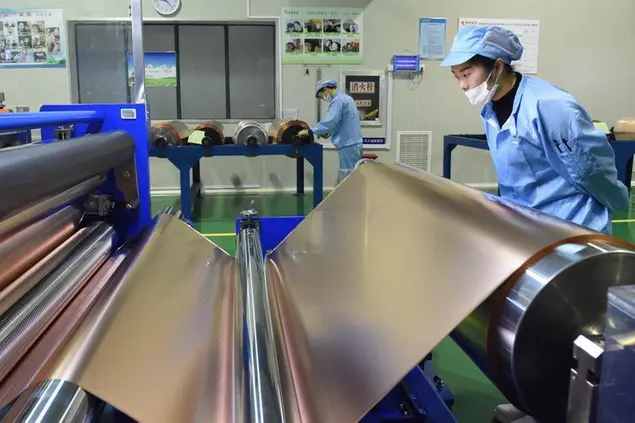PHOTO
Scientists have found that making and throwing away batteries that are used for clean energy can release harmful per- and polyfluoroalkyl substances (PFAS) into the environment. PFAS, also known as 'forever chemicals' due to their persistence, have been linked to various health issues. The study learned that one of these chemicals is used in the liquid and plastic parts of the batteries.
Bis-FASI, a type of PFAS used in lithium-ion batteries (LIB) electrolytes and polymer additives, is being released at concerning levels near manufacturing facilities globally, including locations in the United States, Belgium, and France.
These chemicals can travel far in the water and hurt fish and other water animals. They can also affect people who drink the water.
Researchers tested how this chemical affects water animals like water fleas and zebrafish.
They also measured how much of this chemical is in different samples of water, soil, and plants; finding high concentrations near the places where the batteries are made.
This shows how bad the pollution is in these areas.
Only a small percentage of batteries are recycled
The research also highlights the challenges in waste management, noting that only a small percentage of LIBs are currently recycled.
This could result in significant waste by 2040, underlining the urgent need for improved recycling practices and the development of alternative materials.
Additionally, the study evaluated common water treatment methods, such as granular activated carbon and ion exchange resin, for their effectiveness in removing bis-FASI.
They found out that these methods are not very effective, meaning that it is hard to clean up the water once it is polluted with this chemical.
While LIBs are crucial for reducing carbon emissions, their environmental impact, particularly the release of PFAS, needs urgent attention.
There is a growing call for stricter regulations and the development of fluorine-free electrolytes to mitigate this issue.
Potential policy changes and technological innovations could address these concerns, ensuring that the shift towards clean energy doesn't come at the cost of environmental contamination.
Alternatives to lithium-ion
To address the environmental and health issues associated with PFAS in lithium-ion batteries, several alternative battery technologies are being developed:
Sodium-ion batteries: These use sodium instead of lithium, offering a more abundant and less expensive alternative, though with lower energy density.
Solid-state batteries: Featuring a solid electrolyte, these batteries provide higher energy density and improved safety, eliminating the need for PFAS-containing electrolytes.
Lithium-sulphur batteries: Using sulfur as the cathode material, these batteries promise higher energy density and lower costs, despite challenges with cycle life.
Magnesium-ion batteries: Magnesium offers a safer and potentially higher energy density option, though electrolyte compatibility remains a hurdle.
Aluminium-ion batteries: Aluminium-based batteries provide high charge capacity and low cost, but are still in the research phase.
Organic batteries: Utilising organic compounds for electrodes and electrolytes, these batteries are potentially biodegradable and less toxic, though they have lower energy density.
Zinc-air batteries: Combining zinc and oxygen from the air, these batteries offer high energy density and low cost, but face issues with rechargeability.
Flow batteries: With liquid electrolytes that flow through a cell, these batteries are scalable for large-scale energy storage and have long cycle life, though they have lower energy density.
By incorporating these alternatives, the clean energy transition can continue while minimising environmental contamination.
The development of alternative materials and stricter regulations on PFAS release are essential steps in achieving a sustainable and environmentally friendly energy future.
All rights reserved. © 2022. Bizcommunity.com Provided by SyndiGate Media Inc. (Syndigate.info).
